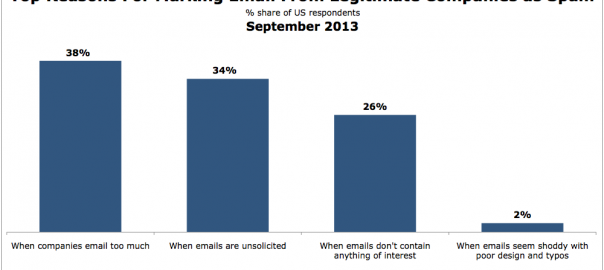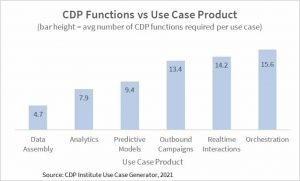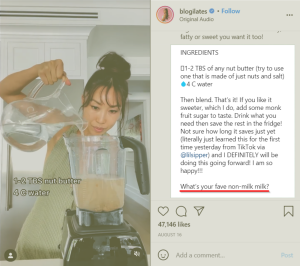Raise your hand if half of your inbox is flooded throughout the day with emails that mainly get sent straight to the trash. Everyone? Yeah, we thought so… But, can you tell the difference between spam emails and email marketing?
Sometimes, the difference is more subtle than you may think and the last thing that you want to do is start sending your clients and customers spam. Because that’s just bad business.

So where do you go from here? It starts with defining both spam and email marketing. You can then move forward with an understanding how you can utilize email marketing and more personalized messaging t0 best reach out to your network in order to build the best relationships. The best business relationships are built on trust between both the customer and the business, and you can’t gain anyone’s trust by sending spam.
Don’t be a spammer. Read on to understand how:
Break it down now
Before you send one more email, let’s start by understanding what exactly qualifies as a spam email and what will land your emails directly in the spam folder…or trash. Remember these two words: unsolicited and bulk. This is the key to becoming a spammer. If you’re sending emails that are both unsolicited and are sent in bulk to hundreds or even thousands of contacts, then you are officially spamming.
On their own, unsolicited and bulk emails are considered quite normal. Unsolicited emails can be cold emails to prospective clients and bulk emails are often how big brands send out their newsletters or marketing information to their customers. But once you combine the two, and send a big ol’ newsletter out to hundreds of people who did not sign up for said newsletter, it becomes spam.
Do better
So, what’s the solution? Start by becoming an email marketer for your business or brand by creating better and more engaging email content for your customers that they’ll really want to see in their inbox. Create a user-friendly experience with each email and if you can, be as personalized as possible…and yes, sometimes that means sending out some individual emails. More than half (58%) of people surveyed said they will not even open an email if it doesn’t look interest them or even look relevant to them. Even more importantly, 64% of those same folks said they’re more likely to open an email if it’s coming from someone they trust. These are two very important email marketing best practices to keep in mind.
The caveat here is that even if you have the best intentions and you represent as legitimate a business as they come, you may be marked spam by your contacts simply because you’re emailing too much or the emails aren’t relevant.

How NOT to spam:
- Smart subject lines. Would you open an email with a subject line ALL IN CAPS???? Doubtful. Keep those classic spammy words or phrases like ‘win big now’ and over-punctuated, over capitalized words out of your subject lines.
- Be personalized. Rather than sending a bulk email to your entire pipeline and address it to the very vague Sir or Madam, use an email provider that will allow you to customize those fields with your contacts’ names. Take a look at MailChimp or Constant Contact if you’re in need of an email marketing service that will allow you to send larger batches of emails while still remaining personal.
- If you’re sending a newsletter, can your contacts choose to unsubscribe? It’s actually illegal to not give your email subscribers this option. Check out the CAN-SPAM act of 2003, the legislature the US passed in an effort to kill off spam emails, and make sure you provide that important link at the bottom of your newsletters…or risk some angry email responses or worse.
- Be relevant. That means, don’t trick anyone! And don’t send out that bulk email to your entire list of contacts when only half of the list needs that particular information. Be diligent in segmenting out your lists and making sure that your clients are only getting what they need. If you keep sending out emails that may not pertain to them, soon they’ll stop opening your emails point blank.
How to check
Your best bet is to start by following basic email marketing best practices, but if you find yourself with low open rates and little to no responses from your network…you may be going straight to that spam folder. Before you panic, there are plenty of services out there that offer spam testing for your emails. Work with a service like Litmus that will scan your email content for anything that may be read as spam by email servers. No, this is not an excuse or a work-around for not sending excellent emails! But you may be throwing in spammy words or phrases without even realizing it, and these services can help you vet those words out and teach you how to create even better emails for the future.
Get personal
Finally, most importantly and maybe one of the best practices of email marketing you can implement today for your business, is sending personalized messaging. We covered how to best utilize email marketing software to create more customized and personal emails that are sent in bulk, but the key is that they’re sent in bulk. Even if you can create custom fields that will fill in your contact’s more personal information, there’s still nothing better than receiving a some more personalized messaging.
Know the difference…and just do it
Take the time to reach out to some of your loyal customers, and maybe even some of those bottom of the barrel customers too, you never know what may come of it and who may appreciate hearing from you the most. Be sure to include information in there that you know they’ll be interested in and work towards nurturing a trusting relationship between you and your email network. If you’re consistently sending out awesome content that they want to read, you’ll find yourself with some very happy people on the receiving end of your emails!
So here’s the question, why be a spammer when you can be so much better? We challenge you to go beyond the spam and take your emails to the next level.
Digital & Social Articles on Business 2 Community(195)
Report Post








